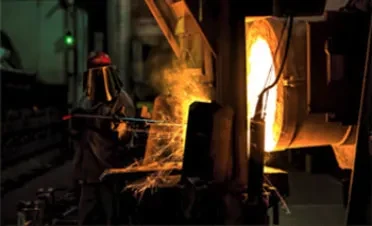sand casting alloys
Sand Casting Alloys A Comprehensive Overview
Sand casting is a widely used manufacturing process that utilizes sand as the primary mold material to produce metal parts. This technique is favored for its simplicity, low cost, and versatility, enabling it to cater to a wide range of alloys. In this article, we will explore the various alloys used in sand casting, their properties, and their applications in different industries.
Understanding Sand Casting
Before delving into the specific alloys, it is essential to grasp the fundamentals of sand casting. The process begins with creating a mold made of sand, which can be bonded with various materials such as clay or resin. The design of the mold reflects the desired shape of the final product. Once the mold is prepared, molten metal is poured into it, allowed to cool and solidify, and then removed, resulting in the casted part.
Commonly Used Alloys in Sand Casting
1. Aluminum Alloys Aluminum alloys are among the most popular materials used in sand casting due to their lightweight, corrosion resistance, and excellent machinability. They typically contain silicon, which enhances fluidity and reduces shrinkage. Common aluminum alloys used in this process include A356, which is renowned for its excellent mechanical properties and weldability, making it suitable for automotive and aerospace applications.
2. Iron Alloys Cast iron, particularly gray iron, is another prevalent choice for sand casting. It is characterized by its excellent castability, good wear resistance, and ability to dampen vibrations. Gray iron is ideal for manufacturing engine blocks, pipes, and heavy machinery components. Ductile iron, another form of cast iron with higher tensile strength, is used in applications requiring resilience and toughness, such as in automotive and heavy-duty industrial parts.
3. Copper Alloys Copper alloys, including bronze and brass, are utilized in sand casting for components that require excellent electrical and thermal conductivity. Bronze, an alloy of copper and tin, is valued for its corrosion resistance and wear and tear capabilities, making it suitable for marine applications and bearings. Brass, primarily composed of copper and zinc, is commonly used for decorative items, plumbing fittings, and musical instruments due to its aesthetic appeal and machinability.
4. Magnesium Alloys Magnesium alloys are lightweight and possess good strength-to-weight ratios, making them ideal for applications in the aerospace and automotive industries. While magnesium is susceptible to corrosion, its alloys can be treated to enhance durability. These alloys are often cast using sand casting techniques to create various components, including housings and structural parts.
sand casting alloys

5. Zinc Alloys Zinc alloys are increasingly popular in sand casting due to their excellent casting characteristics and low melting points. These alloys are often used for die casting, but sand casting can also be employed for specific applications. Their high strength and resistance to corrosion make them a suitable choice for automotive parts, hardware, and various consumer goods.
Advantages of Sand Casting Alloys
The use of various alloys in sand casting presents numerous benefits
- Cost-Effectiveness Sand casting is relatively inexpensive compared to other casting techniques, particularly for low to medium production volumes.
- Flexibility in Design The process allows for complex shapes and configurations, accommodating a wide range of alloy types.
- Scalability Sand casting is suitable for both small-scale and large-scale manufacturing, enabling industries to meet diverse production demands.
- Diverse Alloy Selection The availability of various alloys, each with unique properties, allows manufacturers to tailor their choices to specific requirements, enhancing functionality and performance.
Conclusion
Sand casting remains a vital technique in modern manufacturing, largely due to the various alloys utilized in the process. From aluminum and iron to copper, magnesium, and zinc alloys, the choice of material can dramatically influence the properties and suitability of the final product. As industries continue to evolve and demand innovative solutions, the role of sand casting alloys will undoubtedly expand, paving the way for advancements across multiple sectors. Understanding the characteristics and applications of these alloys enriches the manufacturing landscape, offering endless possibilities for engineers and designers alike.
-
Precision Sheet Metal Stamping Manufacturer | Fast & ReliableNewsAug.01,2025
-
OEM Sand Cast Pump Valve Fittings - Baoding Hairun Machinery And Equipment Trading Co., Ltd.NewsAug.01,2025
-
Custom OEM Impellers | High Efficiency & PrecisionNewsAug.01,2025
-
OEM Sand Cast Pump Valve Fittings - Baoding Hairun Machinery | Customization, Quality AssuranceNewsAug.01,2025
-
OEM Sand Cast Pump Valve Fittings - Baoding Hairun Machinery And Equipment Trading Co., Ltd.NewsAug.01,2025
-
OEM Sand Cast Pump Valve Fittings - Baoding Hairun Machinery And Equipment Trading Co., Ltd.NewsJul.31,2025















